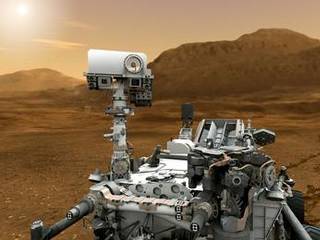Our rover has been performing exceptionally well in autonomous navigation, allowing us to explore new areas and drive longer distances. Today, we are confident enough in our view ahead to plan a drive of over 100 meters, with the last approximately 45 meters utilizing AutoNav. However, this leaves little time for targeted scientific observations, limiting our ability to study intriguing features along the way.
This trade-off between observations and drive distance was anticipated once AutoNav was successfully tested on the B computer, but it remains a challenging decision to make. Some scientists are eager to spend more time studying fascinating geological formations as they travel towards Aeolis Mons (“Mt. Sharp”), but Gale crater was chosen as the landing site for the Mars Science Laboratory (MSL) due to its unique geologic history preserved in the layers of Aeolis Mons. Ultimately, our goal is to reach the base of the mountain with minimal delays and prioritize studying its intriguing geological layers.
